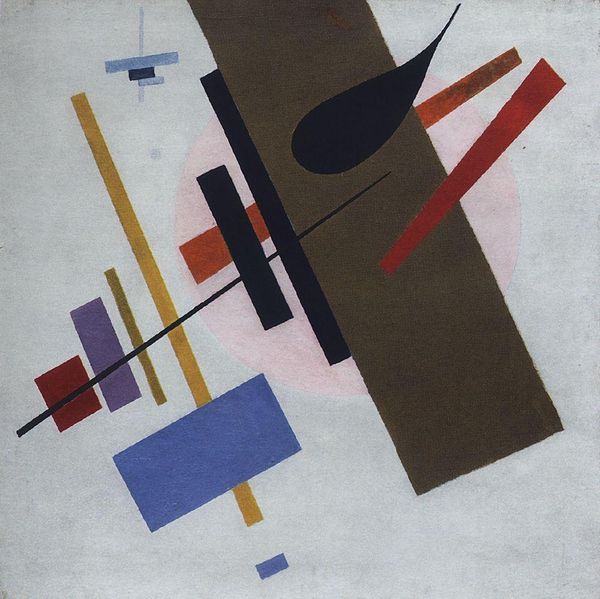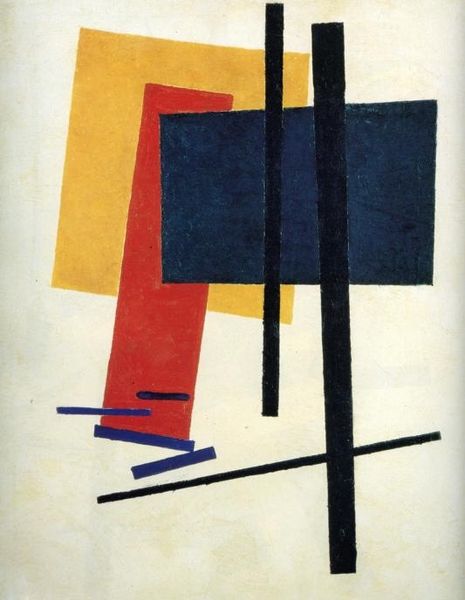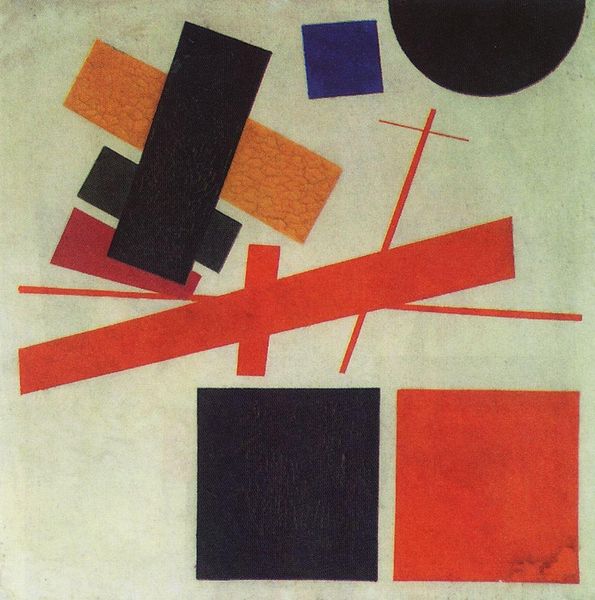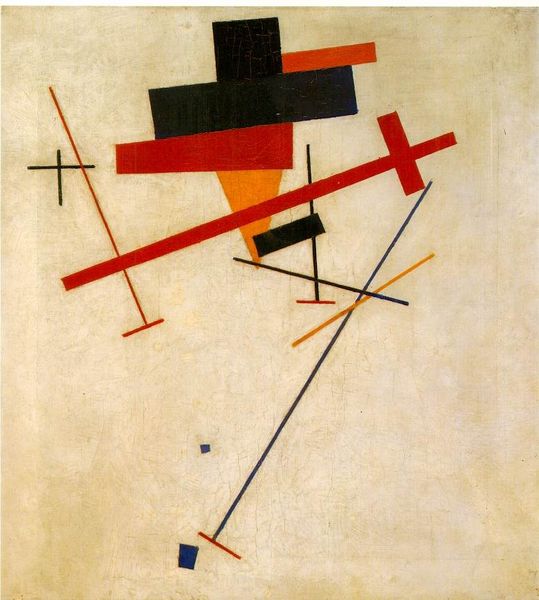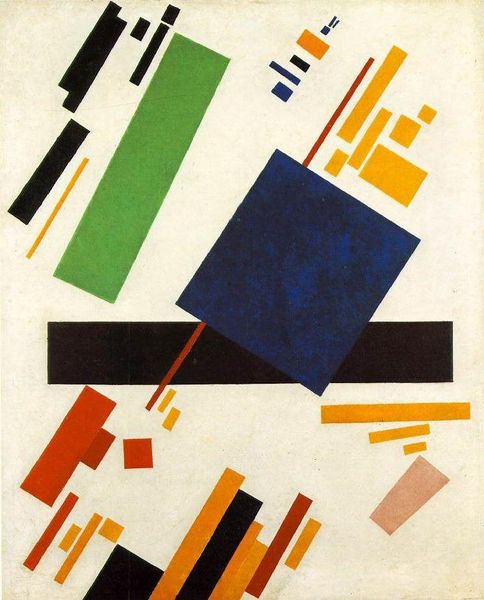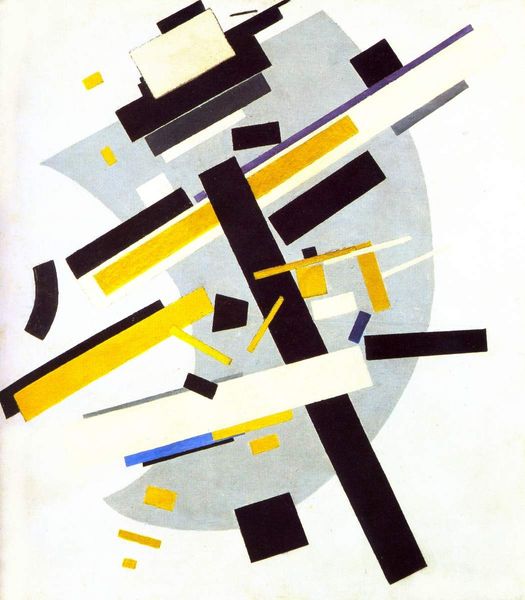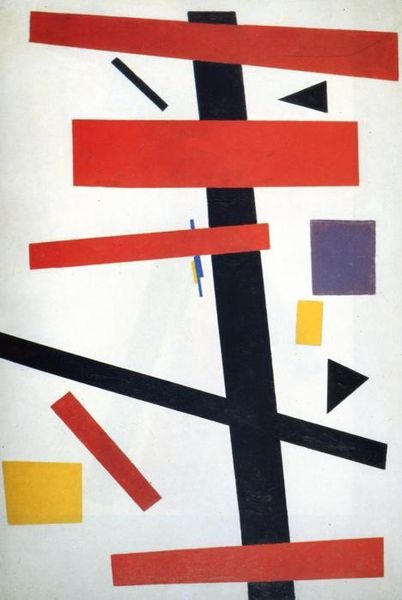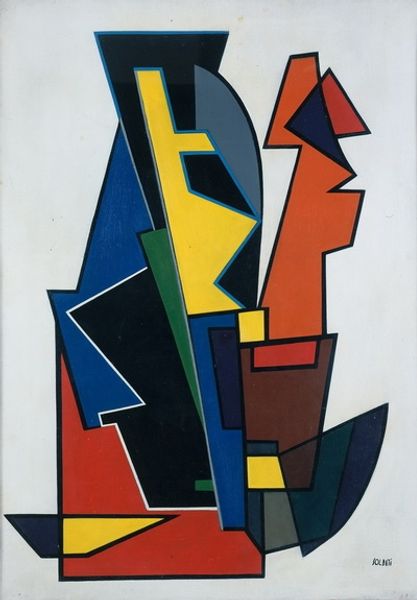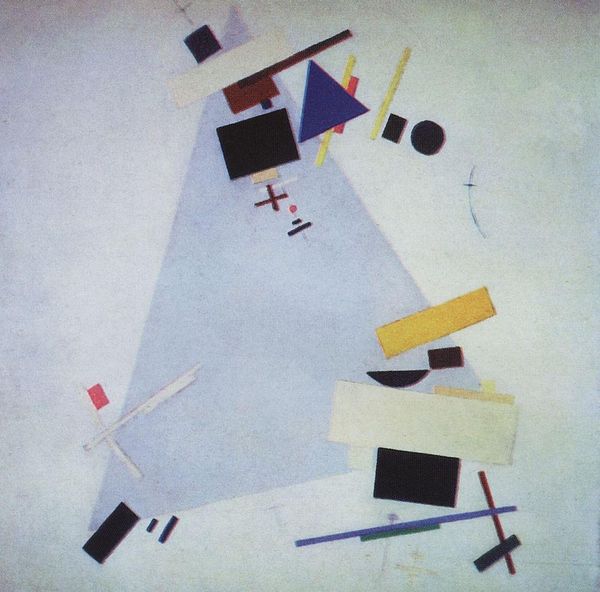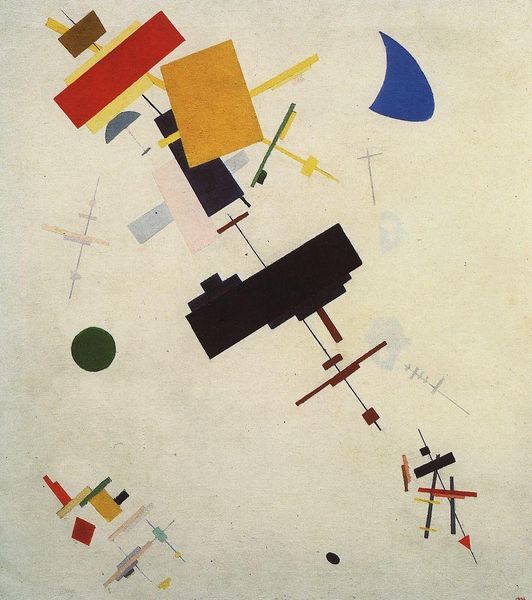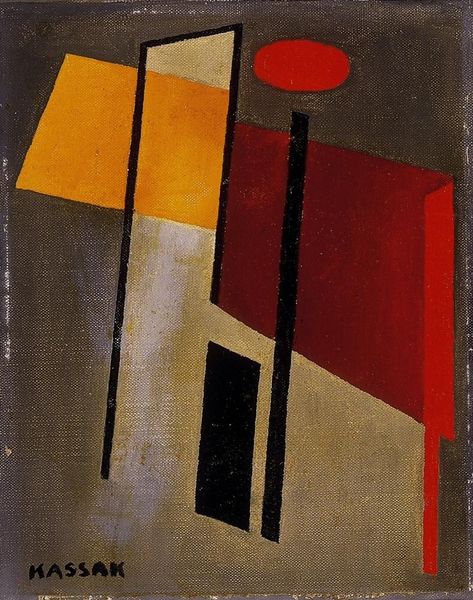
painting, acrylic-paint
#
acrylic
#
painting
#
acrylic-paint
#
geometric
#
abstraction
#
line
#
suprematism
Dimensions: 80.5 x 81 cm
Copyright: Public domain
Curator: Right now, we're looking at "Suprematism", a painting from 1916 by Kazimir Malevich. He worked in acrylic paint to realize this completely abstract composition. What's your initial feeling? Editor: Restless. It's a visual earthquake! I sense so much potential energy, as if these forms could shift at any moment. It's surprisingly unsettling. Curator: Malevich wasn’t aiming for serene. He believed representational art had become obsolete. With Suprematism, he wanted to achieve pure artistic expression through fundamental geometric forms. Editor: So, severing ties with objective reality… a total rejection of the figurative in favor of pure sensation and thought. Knowing that, the chaos makes sense, and starts to speak to something broader. World War I was raging as Malevich painted this; Tsarist Russia was collapsing... Is this geometric chaos somehow symbolic? Curator: Undoubtedly. Suprematism emerged during a time of intense upheaval, attempting to capture a sense of absolute, almost spiritual, truth, through art that transcended the material world and political mess. I think the white background is also vital—he termed it 'the void' which becomes charged with infinite possibility. Editor: And it gives these forms, these basic shapes and stark colours, even more intensity. Look how the black rectangle presses against the right angles of the smaller red shape beneath, the balance teetering on the point of collapse. Malevich wasn’t just painting shapes, he was illustrating the tension of an era ripe with impending change, and visually arguing that Suprematist art holds some sort of… answer? Curator: Well, I wouldn't claim it has answers, but perhaps methods? The movement strived to establish an accessible visual language for revolutionary and utopian beliefs. Ultimately it allows everyone to partake and project meaning. Editor: So even the unsettling feelings, the teetering disorientation—it's all part of a greater dialogue about our rapidly changing relationship to society and one another. Thanks to Malevich's commitment to abstraction we’re able to really tap into something… almost cosmic in its resonance. Curator: Beautifully put. It's interesting how stripping everything down to these simple forms allowed for an explosion of interpretations and possibilities. I come away reminded how much art can reflect, challenge, and reshape our very existence.
Comments
No comments
Be the first to comment and join the conversation on the ultimate creative platform.
